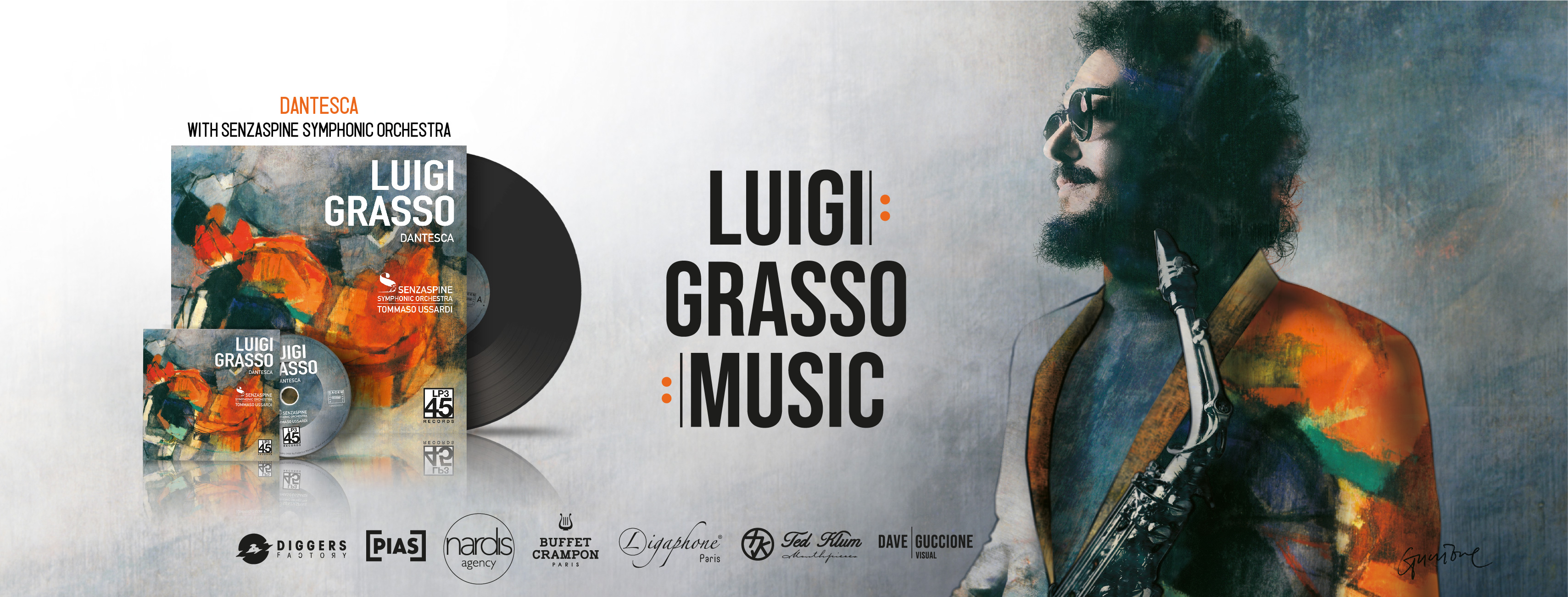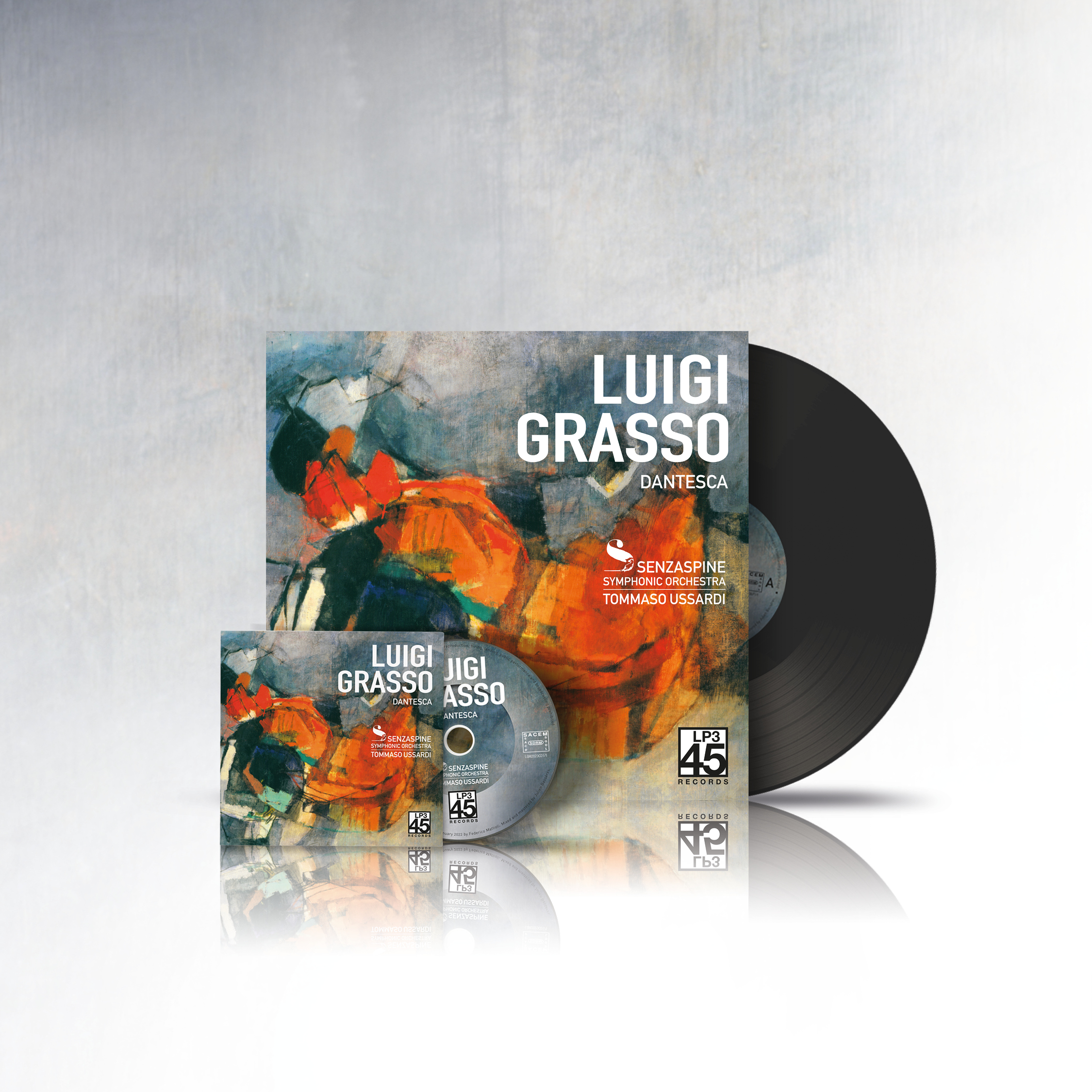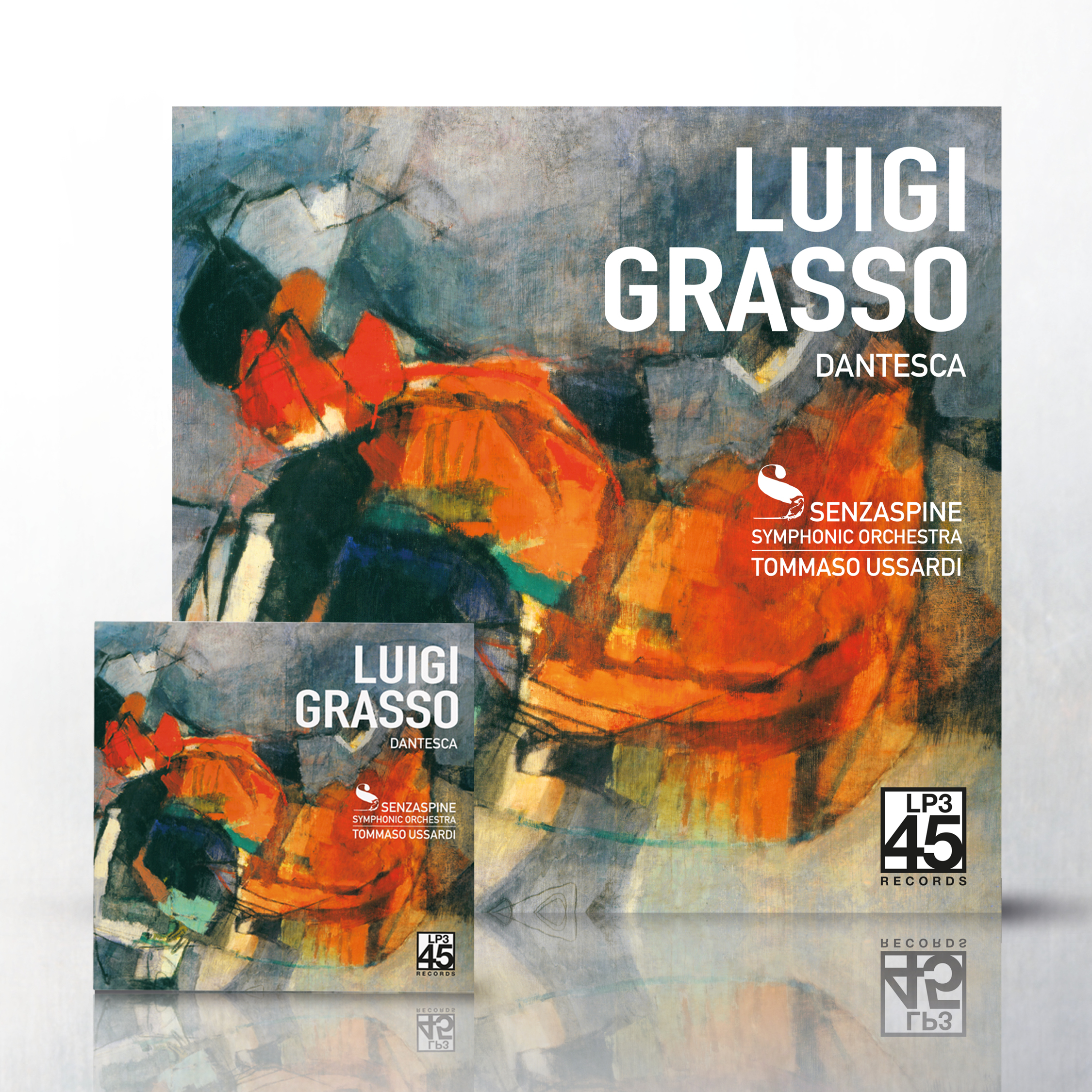


DANTESCA
Jazz and classical music have always been Luigi Grasso’s traveling companions and it is with the naturalness of a bilingual child that he forges their union, free of any dogma, free of any hazardous classification. His world is nourished by the same source at which Maurice Ravel, Charlie Parker, Igor Stravinsky and Thelonious Monk rub shoulders…
Thus, “Dantesca”, an ambitious symphonic work, in every way out of the ordinary, is uniquely his own, reflecting his history and the path of excellence he has followed since his youth.
This new opus, the Italian composer envisaged it as a “reversible” album, which can be read according to one’s desire or mood, starting with one side or the other*. On each of these sides, the writing gesture far precedes the sole desire of the instrumentalist.
It is thus naturally that the “Suite Dantesca”, which occupies the whole of side A, inspired by Dante’s “Divine Comedy”, one of the founding masterpieces of literature, will take shape with a height that towers above the music itself.
This hallucinating initiatory and metaphysical journey, which features the author himself, apprehends destruction as an integral part of re-construction and brings together light and shadow. This abundant complexity of feelings, this marvellous framework of ideas offers Luigi Grasso, with his immense palette of colours, the canvas of a dazzling epic suite, of an unprecedented musical adventure.
Holding our hands as if to lead us from one shore to the other, he offers us, on the B side, a fascinating “Manhattan Serenade” which refers to the teeming universe of the city where Jazz never sleeps and where Broadway, much more than an avenue, is as much the theatre of those famous timeless songs of the Great American Songbook, the privileged ground of improvisers. Grasso attacks this other profile of himself head-on with a stunning exploration of Lush Life, in absolute solo, a virtuoso saxophonist’s performance nourished by the composer’s vision, which unfolds the harmonic and melodic framework of Strayhorn’s theme, as if to make it even clearer. Fears Disappear” and “Lonely Paris” are then revealed, both distilling flavours that bring together jazz and a brilliant symphonic orchestration.
In this new project, Luigi Grasso occupies all the positions: he is the author of the piece (the composer), its dramaturge (the orchestrator), and also plays the protagonist (the soloist). To wear these different costumes with such a gift for ubiquity requires considerable ability and talent. It is also the result of a tremendous amount of work and reflection.
We are thus offered the creation of an artist in full maturity for whom music is the means of observing and embracing the world. Boundaries are blurred, styles are confused, and what remains is an artistic gesture so powerful that it obliterates all debate.
“Suite Dantesca” is one of the very first works to feature a jazz soloist within an orchestral symphonic setting with no further instrumental reference to the world of jazz (no rhythm section here).
It is addressed to those who approach art as a journey, those who, as if against the noise of the world, know how to take the time to lose themselves in unknown worlds, in a maze of inspiration for which a solid and articulated narrative arc is the compass.
It is so very rare for artists to exist so fluently in both classical and jazz spheres. Grasso is a master of sonic disguises.
DANIEL YVINEC